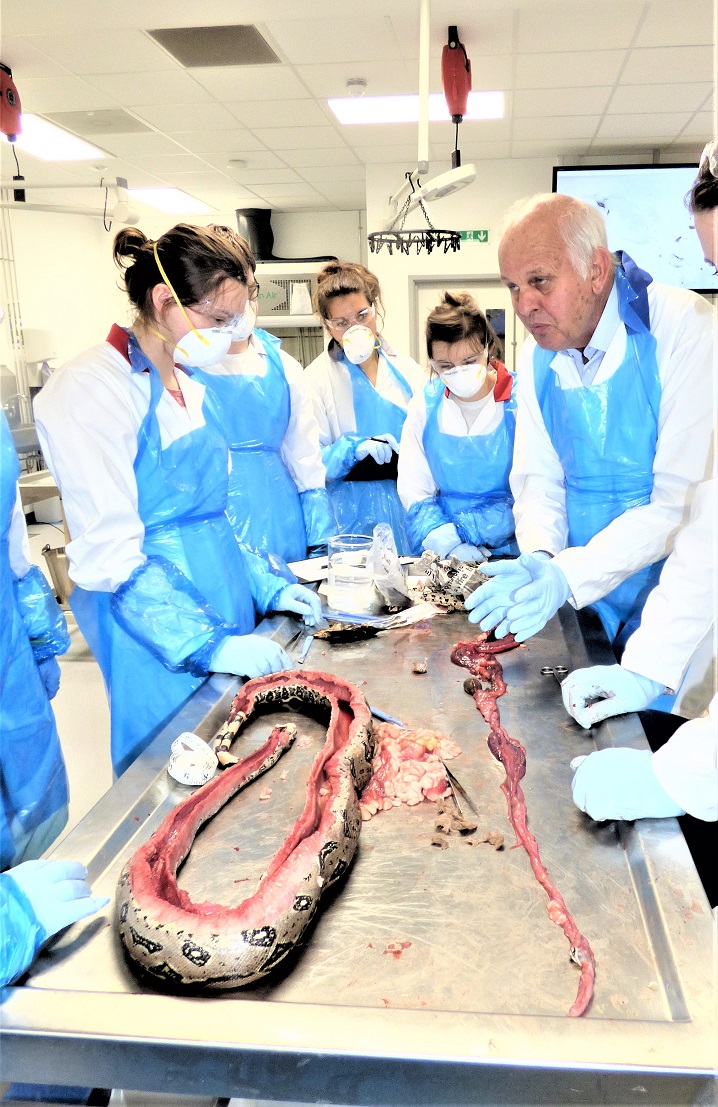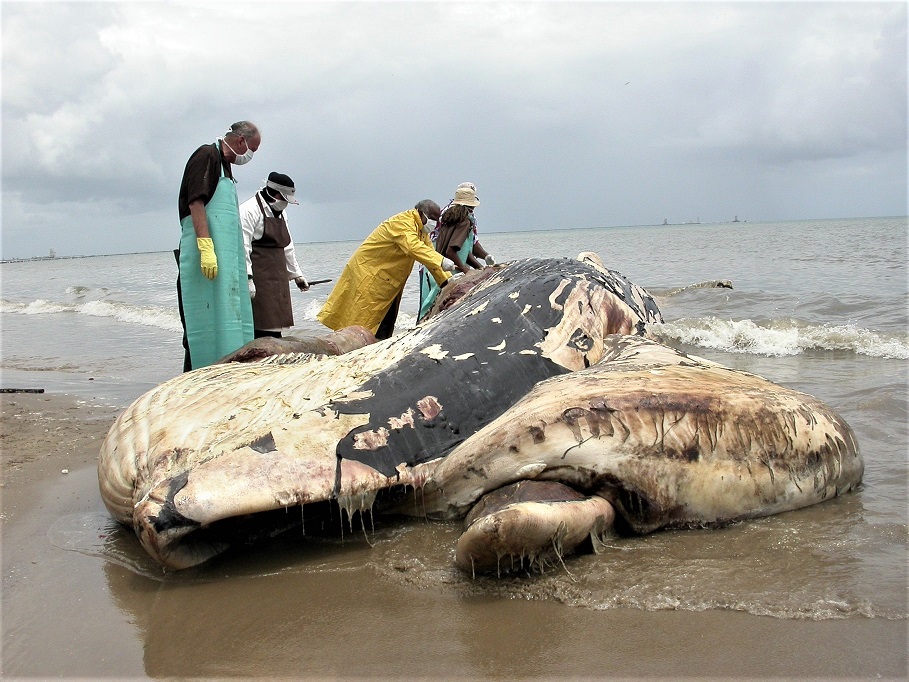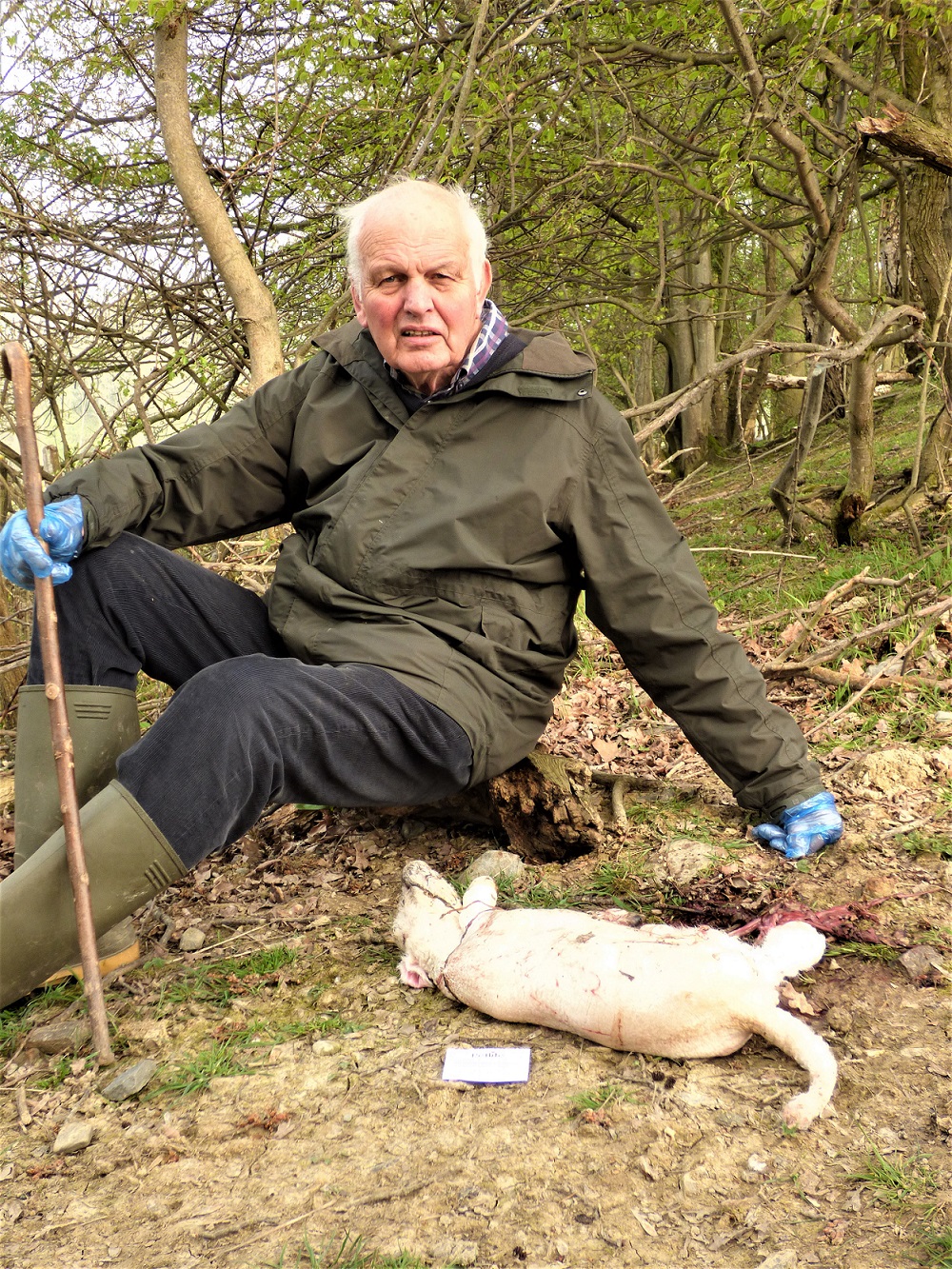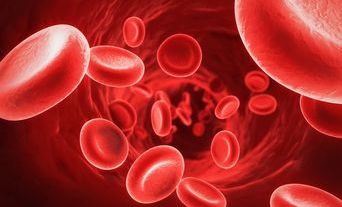Introduction and some personal reflections
The Royal College of Pathologists was founded on 21 June 1962, just four months before we met as fresher undergraduates at Bristol University. We were not to marry until 1969 but, during the succeeding years, we took every opportunity to amalgamate our academic training as a veterinary surgeon and a solicitor, respectively. We participated enthusiastically in activities concerning wildlife conservation and animal welfare that might benefit from a lawyer’s approach as well as a veterinary input. So, we started working as a team.
John’s eyes were opened to the challenges of forensic medicine because one of his lecturers was a Home Office pathologist who used human museum specimens in his lectures to veterinary students. The term ‘forensic veterinary medicine’ was not used in those days, even though members of the veterinary profession had long played an important role as expert witnesses in court cases concerning domesticated species.
Indeed, the expression ‘to vet’ – meaning to make a careful and critical examination, which originated in work with horses – is a reminder of the esteem in which a veterinary surgeon’s assessment of an animal was viewed. Veterinary surgeons also were often involved in cases where a veterinary, as well as a medical, opinion was needed, such as bites and kicks from livestock.
The advent of veterinary forensic medicine
The emergence of veterinary forensic medicine as a distinct subject in Britain took place in the early 1980s and was engendered by two separate issues:
1. growing concern about animal welfare and the need for sound scientific evidence to prosecute or defend those charged with causing harm to animals
2. the expansion of legislation and law enforcement in respect of wildlife crime1 and increasing awareness that appropriately experienced veterinary pathologists could be of great assistance in investigations and the provision of evidence.
In contrast to the situation in human medicine, there was, at that time, no recognised route to specialisation in forensic veterinary medicine or pathology. Those involved were usually self-taught or gained a qualification based on training for work with humans or a more broadly-based course in forensic science.
Over the past two decades, the situation has improved to a certain extent. Forensic teaching has been introduced into the undergraduate programmes at certain British veterinary schools (see Figure 1). Some of the latter have established departments focusing on (especially) forensic pathology.

Newbery et al. (2016), writing in a special focus issue of Veterinary Pathology – itself a major contribution towards developing the scientific basis of veterinary forensic pathology – argued that the key to strengthening veterinary forensic medicine and pathology is education at the undergraduate level and, perhaps more urgently, as a postgraduate specialism.2
The concept is taking time to put into practice, however, and openings for formal post-graduate training remain limited. Notwithstanding this, the European College of Veterinary Pathologists, established in 1995 to advance veterinary pathology and to promote standards within the specialty in Europe, recently introduced a Certificate in Forensic Veterinary Pathology.3
What, then, does veterinary forensic medicine ... comprise? Essentially, it encompasses any situation where animals are involved in criminal or other legal actions.
The College has a Specialty Advisory Committee in Veterinary Pathology but has not as yet established a specific focus for veterinary forensic practitioners. Recently, however, veterinary graduates became eligible to become Associate Members of the Faculty of Forensic & Legal Medicine of the Royal College of Physicians.
There are a few other, mainly postgraduate, often online, training opportunities in different parts of the world – for example, covering wildlife forensic pathology at the University of Florida.
Recent trends
Traditional veterinary forensic medicine and pathology originally related to domesticated animals but are gradually metamorphosing into a more broadly-based discipline.4 This can probably better be described as either ‘animal’ or ‘comparative’ forensic medicine.5 The former term (‘animal forensics') is increasingly gaining acceptance when describing scenarios in which diverse, not just domesticated, species in the Kingdom Animalia are involved.
This approach was given a boost in 2021 at the 1st International Virtual Meeting of Forensic Animal Sciences. The organisers, Dr Victor Toledo and his colleagues, proposed the adoption of the designation ‘forensic animal science’ for this emerging, broad-based discipline. Their argument for a change in terminology was that, although the modern veterinary profession encompasses specialists in fields ranging from anaesthesia to zoological medicine, investigation of many animal-related forensic cases requires the input, not only of veterinarians, but of other specialists such as vertebrate and invertebrate zoologists, conservationists, ethologists, nutritionists and biomedical scientists.
Forensic studies on both domesticated species and wildlife is a relatively new, but rapidly growing, addition to the gamut of subjects that contribute to the science behind the cure.
The features of veterinary forensic medicine
What cases do they investigate?
What, then, does veterinary forensic medicine (as we shall continue to call it here) comprise?
Essentially, it encompasses any situation where animals are involved in criminal or other legal actions. The word ‘forensic’ refers to actions related to a court of law.
Many attributes of forensic work with animals are similar to those encountered when dealing with humans. Differences usually relate to the disparate biological characteristics of some of the species involved, ranging from dogs to dolphins and cats to crustaceans, and the diversity and unpredictability of the locations of incidents, especially when free-living animals feature.
Animals can be either the victim or the instigator of an incident. In addition, animals can serve as sentinels, or witnesses, to an occurrence or themselves be a source of evidence in the form of DNA or other derivatives.
This breakdown is described in a little more detail below.
The animal is the victim when subjected to injuries and other insults, maliciously or accidentally. There has been extensive study of some forms of human-induced damage to animals – for example, ill-treatment of working animals, non-accidental injuries caused to dogs and cats (see later) and the effects of traps, snares and firearms on wildlife.
The animal is the instigator when domestic or wild species give rise to injuries, such as bites, trauma, electrocution, envenomation and hyper-sensitivity reactions, transmit infections or damage property.
What techniques are used?
What characterises investigative techniques in animal cases? First and foremost, the wide range of animal species with which a clinician or pathologist deals means that no one technique is likely to be applicable to all. For example, post-mortem examination of a tortoise requires a different approach from that for a tapir or a tarantula spider. Very large species may necessitate a team effort (Figure 2).

By contrast, small species such as amphibians, fish and invertebrates and diminutive specimens such as embryos, eggs and fetuses, are likely to require micro-techniques, such as the ‘mini-necropsy’.
Animal bites are a common example of where forensic investigations may benefit from medical, dental and veterinary cooperation.
Laboratory investigations on forensic samples from live and dead animals are generally similar to those employed in human forensic medicine, but there are some differences. The temperatures used to incubate cultures can differ, either because some species are cold-blooded (ectothermic) or because warm-blooded (endothermic) taxa have different body temperatures.
Veterinary pathologists may have to exercise ingenuity on occasion – for instance, if asked to assist in ascertaining the species and likely provenance of prepared specimens (taxidermy), trophies and egg collections (Figure 3). They may also identify body parts, particularly when they are believed to be of animal origin.

It has given us pleasure to have been able to play a small part in the evolution and metamorphosis of veterinary forensic medicine...
The crime scene in animal forensic work may range from a wounded dog in a suburban bungalow or a dead lamb on a farm (Figure 4), to a beached dolphin or a poached elephant carcass in the African bush. Suspected cases of wildlife crime are often in isolated locations, with few facilities for proper investigation and a paucity or absence of police, enforcement officials or crime scene specialists. Investigation under such conditions can be both difficult and dangerous. Evidence may be disturbed by wild animals or by wind, rain or snow. The risk of disease, such as anthrax or Ebola, may mean that an investigation or a full post-mortem examination cannot be undertaken.

Veterinary–medical collaboration
Those carrying out forensic pathology investigations on animals may need to work with their colleagues in human forensic work. At present, this is most likely in cases where there are both animal and human elements, such as dog bites, cattle trampling incidents and zoonotic infections. Sometimes a legal case may require the post-mortem investigation of both the cadaver of a dead person and the carcass of a dead animal – for instance, because an assailant has shot or poisoned both a householder and their pet dog.
Animal bites are a common example of where forensic investigations may benefit from medical, dental and veterinary cooperation.
Links between abuse of humans and violence to animals are increasingly attracting attention and study. The College has played a part in raising awareness. In 2011, it hosted a landmark Symposium on the Pathology of Abuse in Animals and Humans, organised by Richard Shepherd and John Cooper. This event was attended by physicians, paediatricians, veterinary surgeons, pathologists, animal welfarists, social workers and police officers.
Evolving veterinary forensics
It has given us pleasure to have been able to play a small part in the evolution and metamorphosis of veterinary forensic medicine and to see the strides that are being made to broaden its remit and to provide training for young colleagues.
When the College was founded six decades ago, its aim was to develop and support the various evolving specialties of pathology. From the outset, the College welcomed members of the veterinary profession into its ranks. Previous articles in the Bulletin in this Jubilee year by Professor Roberto La Ragione and Lucy Oldroyd and colleagues have illustrated that this confidence in veterinary pathologists was not misplaced. Forensic studies on both domesticated species and wildlife is a relatively new, but rapidly growing, addition to the gamut of subjects that contribute to the science behind the cure.





